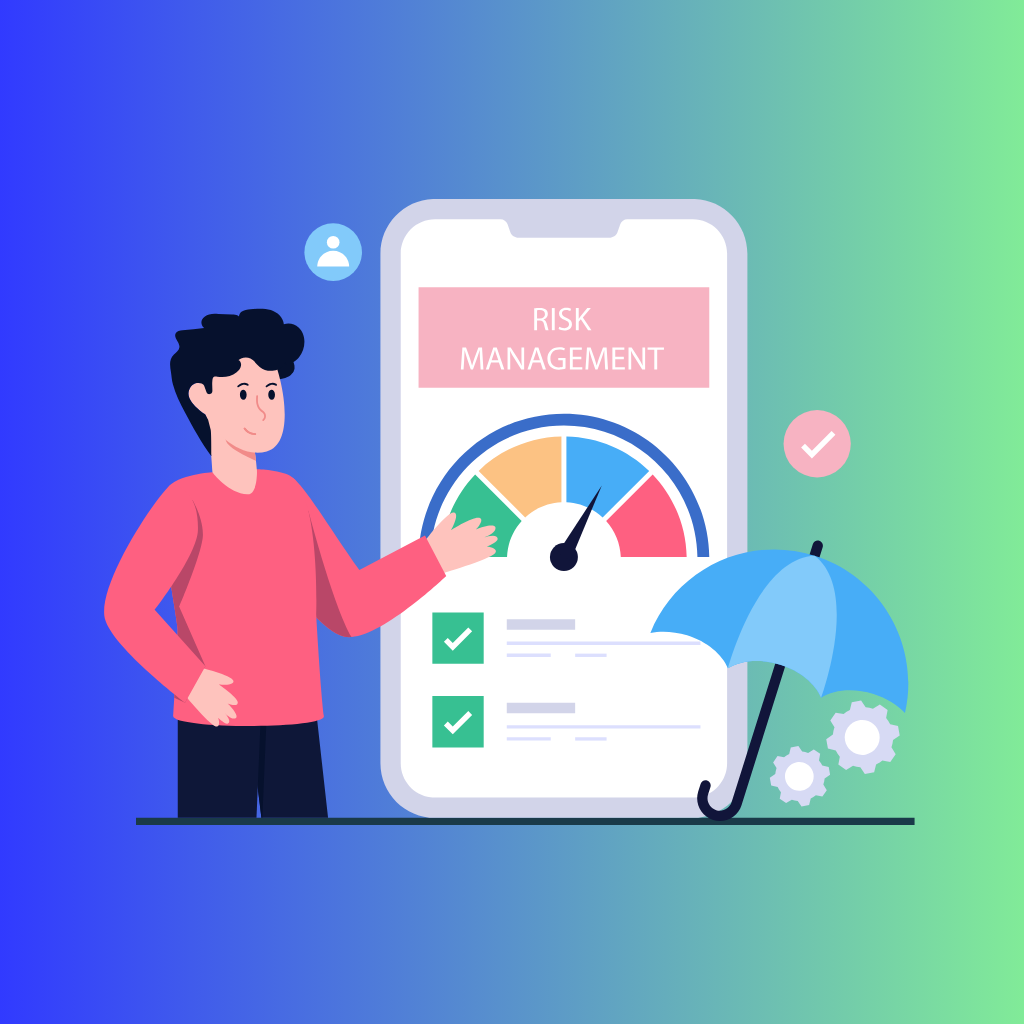Launching a tech startup is an exciting yet inherently risky venture. While innovation drives the tech industry, it also brings uncertainty. For entrepreneurs, understanding and managing these risks is essential for success. Risk assessment is a proactive process that helps identify potential pitfalls before they become major issues. By systematically evaluating risks, startups can prepare for challenges, make informed decisions, and avoid costly mistakes that could derail their projects.
How Effective Risk Management Can Lead to Success
Effective risk management not only prevents disasters but also positions your startup for long-term growth. By identifying, analyzing, and mitigating risks, you create a stable foundation that allows your business to thrive even in the face of uncertainty. A well-prepared startup is more agile, better equipped to handle unexpected events, and more likely to attract investors who value a sound risk management strategy. In short, proactive risk management is a key factor in turning a tech idea into a successful business.
Understanding Different Types of Risks
Market Risks
- Market Demand Uncertainty: One of the biggest risks for any tech startup is the uncertainty surrounding market demand. Even the most innovative products can fail if there is no real demand for them. Conduct thorough market research to validate your idea and ensure there is a viable audience willing to pay for your solution.
- Competitive Landscape: The tech industry is highly competitive, with new startups emerging constantly. Understanding your competitors, their strengths, and their weaknesses is crucial. A misjudgment in this area could lead to launching a product that is outperformed by existing solutions or is too similar to stand out.
Technical Risks
- Feasibility of Technology: Not all tech ideas are feasible with current technology. Assess the technological requirements of your product early on. If the technology needed is still in its infancy or unproven, this could pose a significant risk to your project’s success.
- Development Challenges: Even if your tech idea is feasible, the development process can present numerous challenges, from coding errors to integration issues. These technical difficulties can lead to delays, increased costs, and even project failure if not managed properly.
Financial Risks
- Budget Overruns: Tech projects often require significant investment, and budget overruns are a common risk. It’s essential to have a detailed budget that accounts for potential contingencies. Unexpected costs can arise from delays, technical challenges, or changes in project scope.
- Funding Shortfalls: Securing funding is one of the most critical aspects of launching a tech startup. A shortfall in funding can halt development, delay launch, or force you to make compromises that weaken your product. Consider various funding options and have a backup plan in place.
Operational Risks
- Team and Resource Management: The success of your tech startup heavily depends on the effectiveness of your team. Poor team dynamics, lack of skilled personnel, or inadequate resource management can significantly derail your project. Building a strong, cohesive team is vital.
- Supply Chain Disruptions: If your tech idea relies on hardware components or specific suppliers, disruptions in the supply chain can pose significant risks. Delays in receiving critical components or price fluctuations can affect your timelines and budget.
Legal and Regulatory Risks
- Compliance with Industry Regulations: Navigating the legal landscape is crucial for tech startups, especially those in regulated industries such as healthcare or finance. Failing to comply with regulations can result in fines, legal action, or even the shutdown of your project.
- Intellectual Property Issues: Protecting your intellectual property (IP) is essential. Without proper patents, trademarks, or copyrights, your idea could be copied by competitors, or you might inadvertently infringe on someone else’s IP, leading to costly legal battles.
Identifying Risks Early On
Conducting a SWOT Analysis
A SWOT analysis (Strengths, Weaknesses, Opportunities, Threats) is a powerful tool for identifying risks. By evaluating both internal and external factors, you can uncover potential risks related to your tech idea and develop strategies to address them.
Engaging Stakeholders in Risk Identification
Involve key stakeholders, including team members, investors, and advisors, in the risk identification process. Their diverse perspectives can help identify risks that you may not have considered and provide insights into how best to mitigate them.
Using Scenario Planning for Potential Risks
Scenario planning involves imagining different future scenarios and assessing how your startup would respond to each. This process helps identify risks and prepares your team to handle various challenges that might arise during the development and launch of your tech product.
Developing a Risk Mitigation Strategy
Risk Avoidance Techniques
Risk avoidance involves changing your plans to eliminate a potential risk. For example, if a particular feature poses significant technical challenges, you might choose to remove or simplify it to avoid the risk altogether.
Risk Reduction Strategies
- Prototyping and Testing: Build prototypes and conduct tests to identify and address potential issues early. This approach reduces the risk of major flaws in the final product and helps you refine your idea based on real-world feedback.
- Diversifying Revenue Streams: Relying on a single source of revenue can be risky. By diversifying your revenue streams, you reduce the impact of a downturn in one area and increase your overall financial stability.
Risk Transfer Options
- Insurance Coverage: Certain risks, such as liability or property damage, can be transferred through insurance. By obtaining the right insurance coverage, you can protect your startup from financial losses related to these risks.
- Outsourcing Certain Operations: If a particular aspect of your project carries high risk, consider outsourcing it to specialists. For example, outsourcing manufacturing to a reliable partner can mitigate risks associated with production.
Risk Acceptance Plans
- Contingency Planning: Sometimes, accepting a risk is the best course of action, especially if the potential impact is low or the cost of mitigation is high. Develop contingency plans to manage these risks if they occur.
- Building Flexibility into Your Business Model: A flexible business model can adapt to changing circumstances, making your startup more resilient to risks. This might involve modular product designs, agile development practices, or adaptable marketing strategies.
Conclusion
Proactively identifying and mitigating risks is essential for the success of your tech startup. By understanding the different types of risks and developing a comprehensive risk management strategy, you can avoid potential pitfalls and ensure that your startup is well-prepared to handle challenges.
Risk management is an ongoing process that requires continuous attention. As your startup evolves, new risks will emerge, and existing ones may change. Regularly reviewing and updating your risk management plans will help you maintain a resilient business strategy and increase your chances of long-term success.




